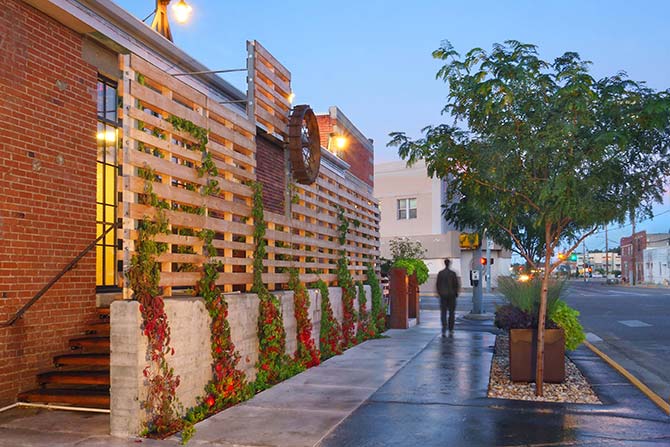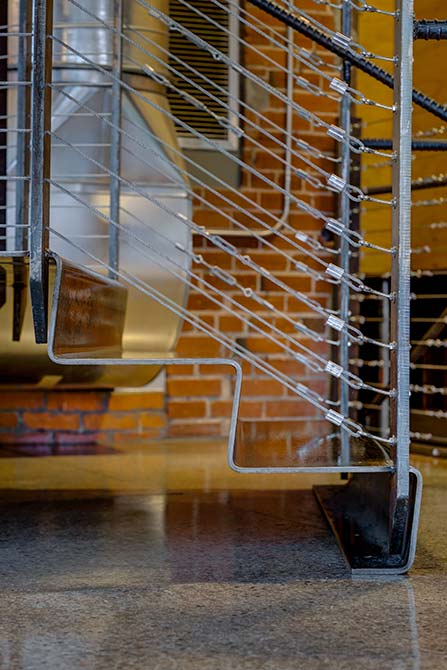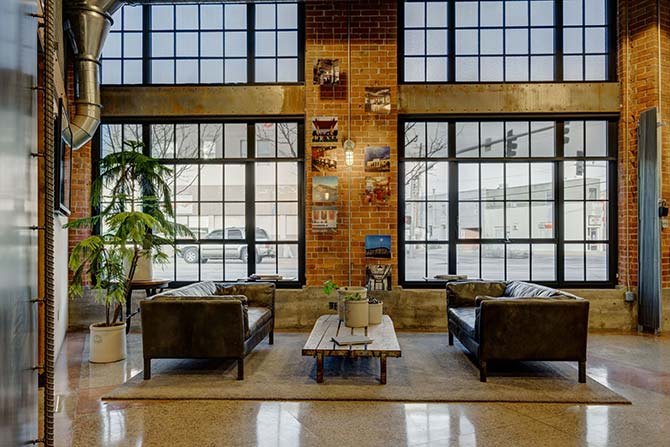Location: Casper, WY
Size: 18,900 sq. ft. (site), 11,500 sq. ft. (building)
Category: Adaptive Re-Use or Historic
The project began when the owner (an architect turned developer for this project) co-located home and the office into an urban environment that included an underutilized lower level repurposed into a co-work office space.
The historic warehouse structure is one of a handful of “survivors” of a former railyard in what was a gritty, industrial edge of town. It is presently situated on a prominent intersection demarcating the entrance to downtown.
Time and numerous misguided alterations had left the structure in a state of ill repair. However, the owner appreciated the building’s historical relevance and grasped its capacity to catalyze a neighborhood revitalization. The owner serving as the general contractor also allowed more control of the budget and design opportunities in this atypical project.
The history and cues of past industrial machining inspired a concept where original building components are reinvigorated and exposed in their original character while contemporary industrial warehouse and machinist elements are integrated into honest expression.
A century of misguided building remodels was stripped away by removing layers of paint, uncovering original brickwork and refinishing overlain floors into authentic distressed hardwood and polished concrete floors. The existing building fabric was kept intact and repaired whenever possible.
New construction is respectful of the existing structure, a nuanced dialogue between new and old. In some locations, the two are carefully delineated. In others, modern interventions take a back seat to historic character. Original exposed brick walls, wooden floor assemblies, exposed roof structure and polished concrete floors provide a rich backdrop for each space.
To maintain the characteristic feel, the use of new materials was limited to a simple palette of translucent glazing or polycarbonate, mill-finished steel, reclaimed second-use plywood, wood pallets and painted gypsum.
Adaptive reuse strategies have augmented this 1917 structure in preparation for another 100+ years of relevance. The project tells an important story about the role historic buildings can play in anchoring urban revitalization, and the story has been preserved and shared in a documentary and a book and has been published in ArchDaily.











